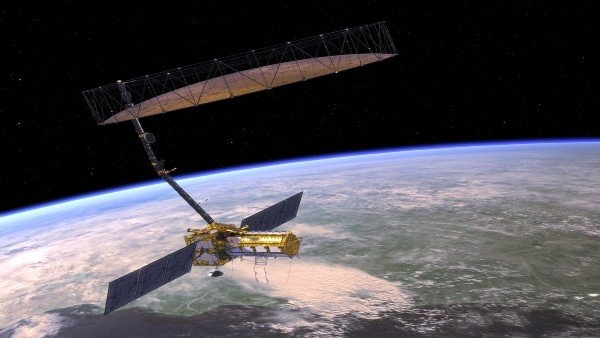ISRO, NASA jointly develops radar for joint earth observation satellite mission
Total Views |
Bengaluru, March 09: In the collaboration with US space agency NASA, the Indian Space Research Center has completed the development of Synthetic Aperture Radar (SAR). The radar has the capability of producing extremely high-resolution images for joint earth observation satellite missions.

NISAR is the first satellite mission that will use two different radar frequencies called L-band and S-band. NISAR is capable of producing extremely high-resolution images for joint earth observation satellite missions. These radar frequencies will be used to measure the changes in Earth’s surface less than a centimeter across. NISAR uses a sophisticated information-processing technique known as SAR to produce extremely high-resolution images.
SAR is a sophisticated information-processing technique that is used to produce high-resolution images. It is a high-rate communication subsystem for the GPS receivers, science data, payload data subsystem, and a solid-state recorder.
NISAR will provide a means of high spatial and temporally complex processes such as ecosystem disturbances, ice sheet collapses, and natural hazards like volcanoes, landslides earthquakes, and tsunamis. It will also measure the changing ecosystem of Earth, Dynamic surfaces & ice masses. The mission will also provide information regarding biomass, natural hazards, groundwater, and sea-level rise.
The instrument's imaging swath the width of the strip of data collected along the length of the orbit track is greater than 150 miles (240 kilometers), which allows it to image the entire Earth in 12 days. "NISAR will observe Earth's land and ice-covered surfaces globally with 12-day regularity on ascending and descending passes, sampling Earth on average every six days for a baseline three-year mission", NASA said.
According to the reports this mission will be launched in 2022 from Sriharikota space Port. The payload was shipped from the Ahmedabad-based Space Applications Centre (SAC) to the Jet Propulsion Laboratory (JPL) of NASA.
It should be noted that ISRO had collaborated with NASA to develop and launch the NISAR satellite on September 30, 2014. As part of that deal, NASA is providing the L-band SAR for the mission. While ISRO is providing the S-band radar, spacecraft bus, launch vehicle, and other launch services associated with the mission.
.
.